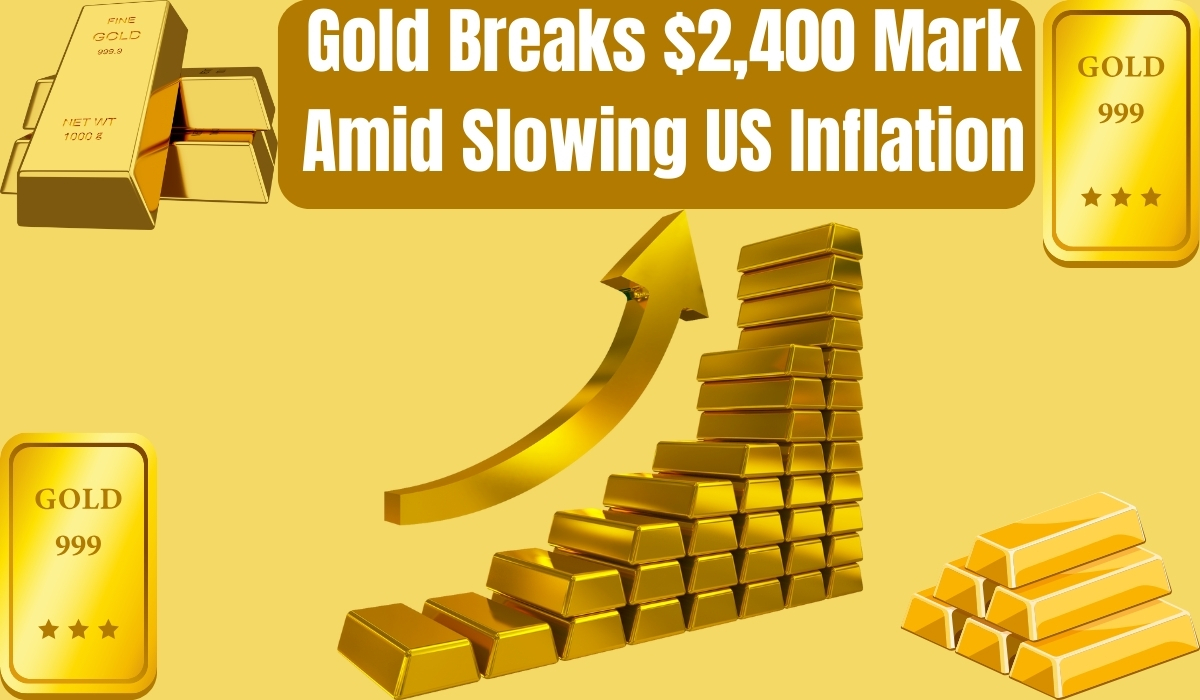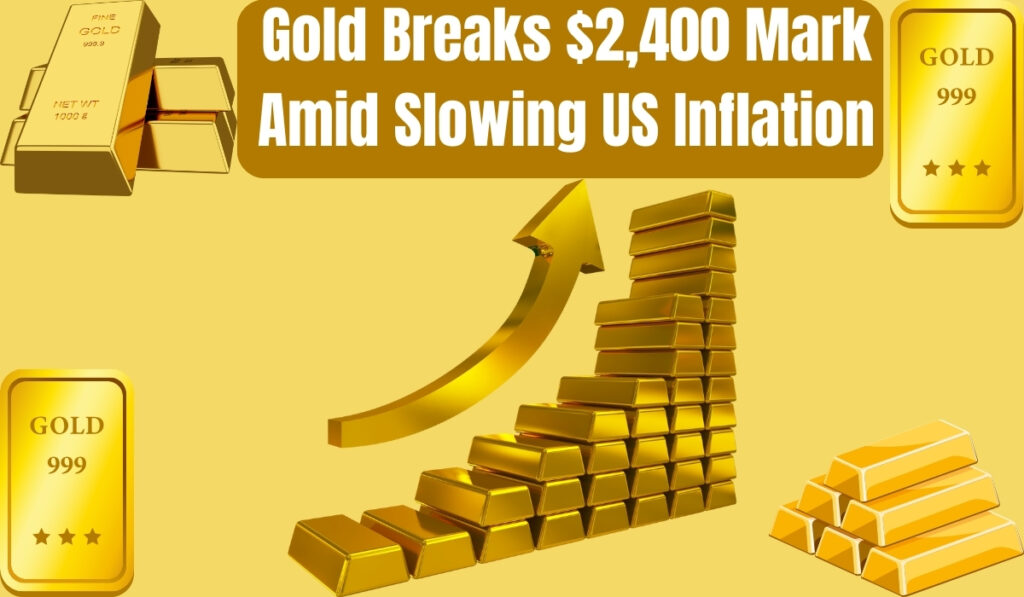Gold Breaks $2,400 Mark Amid Slowing US Inflation!

Introduction
The recent surge in gold prices has been a topic of significant interest in financial markets globally. As gold prices soar past the $2,400 mark, investors and analysts are closely examining the factors contributing to this rally. The tempered US inflation has played a crucial role in this development, prompting a detailed analysis of the current economic landscape and its implications for gold.
Understanding the Gold Price Surge
Gold as a Safe-Haven Asset
Gold has historically been viewed as a safe-haven asset, especially during times of economic uncertainty. Its value tends to rise when inflation increases or when there is instability in other investment markets. The recent moderation in US inflation has led to a renewed interest in gold, as investors seek to hedge against potential economic downturns.
Impact of US Inflation on Gold Prices
US inflation plays a pivotal role in determining gold prices. When inflation is high, the value of currency decreases, leading to an increase in gold prices as it is seen as a stable store of value. The recent data indicating tempered US inflation has reinforced the attractiveness of gold, as it suggests a less aggressive monetary policy stance from the Federal Reserve, which can keep interest rates lower for longer periods.

Gold Breaks $2,400 Mark Amid Slowing US Inflation!
Economic Factors Influencing Gold Prices
Federal Reserve Policies
The Federal Reserve’s monetary policies significantly impact gold prices. With tempered inflation, the Fed may opt to maintain or slightly adjust interest rates rather than implement drastic hikes. This environment is conducive to higher gold prices, as lower interest rates reduce the opportunity cost of holding non-yielding assets like gold.
Global Economic Uncertainty
Economic uncertainties, such as geopolitical tensions, trade wars, and global health crises, also drive gold prices. In recent times, issues such as the ongoing geopolitical tensions in various regions and the aftermath of the COVID-19 pandemic have fueled investor demand for gold as a hedge against these uncertainties.
Market Dynamics and Investor Behavior
Investor Sentiment and Speculation
Investor sentiment and speculative activities have a profound effect on gold prices. Positive sentiment towards gold, driven by expectations of sustained economic uncertainties and tempered inflation, has led to increased buying activities. This surge in demand has been a key factor in pushing gold prices beyond the $2,400 threshold.

Exchange-Traded Funds (ETFs) and Physical Gold Demand
The role of ETFs in the gold market cannot be overstated. ETFs provide a convenient way for investors to gain exposure to gold without needing to physically hold the metal. The increased inflow into gold ETFs has mirrored the rising prices, further bolstering the upward trend. Additionally, demand for physical gold in key markets such as India and China has remained robust, adding to the overall demand dynamics.
Future Outlook for Gold Prices
Potential Scenarios for Inflation and Interest Rates
The future trajectory of gold prices will heavily depend on the path of inflation and interest rates. Should inflation remain tempered and the Federal Reserve maintain a dovish stance, gold prices are likely to remain elevated. Conversely, a sudden spike in inflation could prompt the Fed to raise interest rates more aggressively, potentially dampening gold prices.
Long-Term Investment Strategies
For long-term investors, gold remains a valuable asset in a diversified portfolio. The current economic environment suggests that gold will continue to serve as an effective hedge against inflation and economic uncertainty. Investors should consider their risk tolerance and investment horizon when making decisions about gold investments.
Conclusion
The recent rally in gold prices, surpassing $2,400, is a testament to its enduring appeal as a safe-haven asset. The tempered US inflation has played a significant role in this surge, alongside other economic factors such as Federal Reserve policies and global uncertainties. As investors navigate these complex dynamics, gold remains a crucial component of a well-rounded investment strategy.



One thought on “Gold Breaks $2,400 Mark Amid Slowing US Inflation!”